In the rarefied air of UFC championship fighting, the difference between victory and defeat often lies not in the physical preparation, but in the subtle evolution of a fighter’s approach to training camp. For Sean O’Malley, the journey from rising star to bantamweight champion has been marked by a transformation in how he approaches these crucial twelve weeks of preparation.
“This camp has been really, really good,” O’Malley reflects, his voice carrying the quiet confidence of someone who has found their rhythm. The contrast with his previous title fight preparation, particularly the camp leading up to his victory over Aljamain Sterling, is striking. Where that camp was shadowed by injury concerns—moments where O’Malley admits he wondered if a single takedown might spell disaster—his current preparation exudes a champion’s assurance. “This time, I feel like I’ll be able to dig deep if I need to,” he explains, offering a glimpse into the psychological evolution that accompanies physical preparation at the highest level.
At the heart of O’Malley’s training evolution lies a partnership that defies the typical fighter-coach dynamic. His decade-long relationship with coach Tim Welch has grown beyond the conventional boundaries of training, evolving into a brotherhood forged through daily rituals that extend beyond the gym. “We play Call of Duty every single day together, we play Duos, we get dubs,” O’Malley shares, highlighting how their connection transcends the traditional confines of athletic preparation. This unusual approach has yielded remarkable stability in a sport where fighter-coach relationships often fracture under the pressure of success.
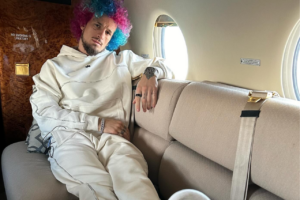
The financial dynamics that typically strain such partnerships have been navigated with remarkable wisdom. “I make my own money, he makes his own money,” O’Malley explains, touching on a crucial element that has preserved their relationship. Unlike many situations where a fighter’s rising success creates tension over compensation, their partnership has remained uncomplicated by such concerns. “We’ve leveled each other up,” he reflects, describing a mutually beneficial growth that has characterized their journey.
Their training methodology reflects a sophisticated understanding of peak performance. The camp operates on a precisely structured schedule—two training sessions every Monday and Tuesday, with recovery periods strategically planned. This disciplined approach extends beyond the typical twelve-week camp window, creating a sustainable framework for long-term success. Even during off-periods, O’Malley maintains a level of preparation that keeps him perpetually ready for the demands of championship fighting.
This evolution in training philosophy represents a broader maturation in O’Malley’s approach to his career. The “Sugar Show” isn’t just about spectacular knockouts anymore; it’s about sustainable excellence and calculated progression. His team has crafted a preparation system that acknowledges both the physical and mental demands of championship fighting, while maintaining the creative spark that makes O’Malley one of the most exciting fighters in the UFC.
As he approaches his historic title defense at the Sphere, O’Malley’s training camp stands as a testament to the evolution required to not just reach the summit of the sport, but to maintain that position. It’s a reminder that in the unforgiving landscape of professional fighting, true greatness often lies in the ability to constantly refine and adapt one’s approach while staying true to the fundamental elements that sparked initial success.
In the ever-evolving landscape of combat sports, certain moments transcend the ordinary confines of competition to become cultural touchstones. The UFC’s debut at the Las Vegas Sphere represents precisely such a moment, with Sean O’Malley’s title defense against Merab Dvalishvili serving as the perfect christening for this architectural marvel of modern entertainment.
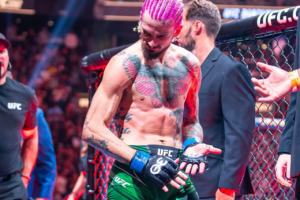
The Sphere, with its imposing presence on the Las Vegas skyline, presents a unique backdrop for combat sports history. Its distinctive design, featuring a fully programmable LED exterior wrapped around a perfect sphere, creates an atmosphere unlike anything previously seen in mixed martial arts. For O’Malley, the venue’s selection for his title defense carries deeper significance. “I know Max Holloway wanted this, I know UFC was saying Conor and Chandler wanted this,” he reflects. “For them to give it to me shows a lot—I’m doing what I need to be doing.”
The technical considerations of fighting in such a unique venue haven’t escaped O’Malley’s attention. The champion contemplates the potential impact of the Sphere’s immersive visual environment, particularly its massive LED backdrop. “There’s a huge screen in the back,” he notes, before adding with characteristic confidence, “but I should be pretty focused on punching Merab’s face, so I think I should be able to dial in.” This balance between acknowledging the venue’s grandeur while maintaining competitive focus exemplifies the modern champion’s approach to high-stakes events.
The timing of the event creates an intriguing narrative intersection with boxing’s simultaneous marquee matchup—Canelo Alvarez fighting across the street at T-Mobile Arena. This scheduling clash has sparked discussions about viewership and cultural impact, with O’Malley offering a characteristically shrewd assessment: “It’s not even really like a fair comparison… it’s going to be who has the headlines next week, who are they talking about Sunday, Monday, Tuesday, Wednesday, that whole week.” His understanding of the broader entertainment landscape reveals a fighter who recognizes that success in modern combat sports extends beyond the physical contest.
The historical significance of headlining the Sphere’s first UFC event isn’t lost on O’Malley. “If they’re never going back to the Sphere again… we were the first, possibly the first and last,” he muses, understanding that this moment represents more than just another title defense. It’s an opportunity to create an indelible mark on combat sports history, to author a chapter that will be referenced for years to come.
This convergence of architectural innovation and athletic excellence creates a unique moment in sports entertainment. The Sphere’s technological capabilities promise to enhance the visceral drama of mixed martial arts, potentially setting new standards for how combat sports are presented to live audiences. For O’Malley, it’s an opportunity to showcase his skills on a stage that literally illuminates the evolution of live sports entertainment, merging the timeless appeal of one-on-one combat with the cutting-edge possibilities of modern venue design.
As the UFC continues to push boundaries in both athletic competition and entertainment presentation, this debut at the Sphere represents a bold step into the future of live sports experiences. For O’Malley, it’s another opportunity to demonstrate why he’s become one of the sport’s most compelling figures—someone capable of rising to historic occasions while maintaining the authentic appeal that has marked his ascent to championship status.
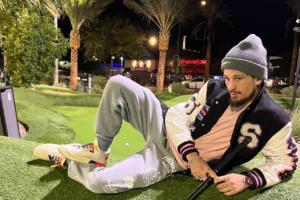
In the sophisticated chess match that is modern mixed martial arts, few opponents present the kind of multifaceted challenge that Merab Dvalishvili brings to the octagon. The Georgian fighter, riding an impressive ten-fight win streak, has earned his reputation as perhaps the most relentless force in the bantamweight division—a distinction that demands careful analysis from champion Sean O’Malley’s camp.
“This guy has a serious problem,” O’Malley acknowledges, his voice carrying the measured respect of someone who understands the gravity of the challenge ahead. Dvalishvili’s fighting style is defined by an almost mechanical persistence, a trait demonstrated most dramatically in his bout with Petr Yan, where he attempted an astounding fifty takedowns. This volume-based approach to wrestling presents a unique puzzle for O’Malley’s typically strike-oriented game plan.
The psychological dimensions of this matchup run deeper than mere tactical considerations. Dvalishvili’s close relationship with former champion Aljamain Sterling—whom O’Malley defeated to claim the title—adds layers of personal motivation to an already high-stakes encounter. “I think it is a little personal,” O’Malley reflects, “just because of the Aljo thing. That was his friend, his best friend… and now I knocked him out, and now it’s like he almost wants to get that one back.”
What makes Dvalishvili particularly dangerous is his seemingly inexhaustible cardio reservoir. His ability to maintain a furious pace for twenty-five minutes sets him apart in a division known for its high-energy exchanges. “His cardio, literally his endurance and constantly being able to go forward for 25 minutes, is insane,” O’Malley observes. This attribute is perhaps best illustrated by Dvalishvili’s notorious training videos, including one where he dove into a frozen lake with characteristic abandon—a moment that O’Malley sees as revealing of his opponent’s mindset: “Sometimes being really not smart is good for fighting.”
However, O’Malley’s team has identified crucial differences between this challenge and previous encounters. “Peter Yan has a completely different style than I do,” O’Malley notes, analyzing how the physical dimensions of the octagon will play into their strategy. “That might have been in the smaller cage, which plays a huge role. That’s like playing half-court basketball versus full-court basketball—it’s a different game.”
The champion’s analytical approach reveals a sophisticated understanding of how spatial dynamics will influence the contest. Unlike Yan, who shares a similar height with Dvalishvili, O’Malley’s length and movement create different geometric challenges for his opponent’s wrestling-heavy approach. “He’s not going to be able to take 50 shots on me,” O’Malley asserts with the confidence of someone who has thoroughly studied the tactical implications of their physical advantages.
This matchup represents more than just a clash of styles—it’s a test of fighting philosophy. Dvalishvili’s coaches have proclaimed this his best training camp ever, setting the stage for what promises to be an collision between technical brilliance and raw determination. As O’Malley’s coach observed, Dvalishvili “will have to eat some serious shots to even get to Sean.” This dynamic creates a fascinating question: can methodical pressure overcome precision striking, or will technical superiority prevail over relentless aggression?
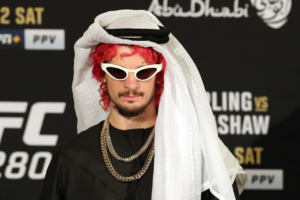
The resolution of this question will not only determine the bantamweight championship but potentially reshape our understanding of how different fighting approaches fare at the highest level of the sport. As the Sphere prepares to host its first UFC event, this stylistic clash promises to provide answers that will resonate throughout the combat sports world.
In the rapidly evolving landscape of combat sports, the path to greatness extends far beyond technical prowess in the octagon. Sean O’Malley’s vision for his legacy represents a masterclass in modern athlete brand building, where championship achievements serve as a foundation for broader cultural impact.
When asked about becoming the face of the UFC after this fight, O’Malley’s response carries the quiet confidence of someone who has carefully mapped their trajectory: “I go out there and knock Merab out, I do.” This isn’t mere bravado—it’s a calculated assessment of the combat sports landscape. Even as he acknowledges the enduring drawing power of figures like Conor McGregor and Alex Pereira, O’Malley sees a clear path to becoming the sport’s premier attraction.
The architecture of O’Malley’s brand building is particularly noteworthy in how it spans traditional and digital domains. His integration into the streaming community, playing Call of Duty with his coach and engaging with prominent content creators, demonstrates an intuitive understanding of how modern athletes can build authentic connections with fans outside their primary sport. Yet he maintains a disciplined approach to these endeavors, ensuring they complement rather than detract from his athletic pursuits.
What sets O’Malley’s legacy-building approach apart is his recognition of the historical opportunities before him. The potential sequence of opponents—Dvalishvili followed by Umar Nurmagomedov—presents a chance to craft a resume that would resonate deeply within combat sports history. “I go out there beat Merab and beat Umar, that’s me in history forever,” he reflects, before adding with striking perspective, “I could only be 30 years old by the time that happens—I still got five years left.”
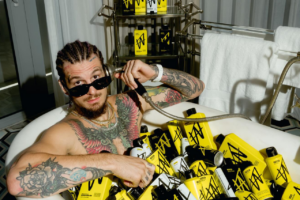
This long-term vision extends beyond mere fight scheduling. O’Malley sees possibilities that stretch into new territories: “I could beat Ilia, you know, I could go… box Dante, could be crazy at a stadium in Vegas.” The mention of boxing crossover opportunities isn’t casual; it reflects an understanding of how combat sports stars can transcend their original disciplines to create truly memorable moments.
The sophistication of O’Malley’s approach to maintaining motivation reveals a mature understanding of career longevity. “People ask me how do you stay motivated, I’m like there’s so much more sweet shit for me to do,” he explains, embodying the mindset of someone who sees their current success as a platform rather than a destination.
Perhaps most telling is how O’Malley measures success in the modern era. When discussing the concurrent scheduling of his fight with Canelo Alvarez’s boxing match, he offers insight into how contemporary combat sports success is quantified: “It’s not even really like a fair comparison to who does more [pay-per-view buys]… it’s going to be who has the headlines next week, who are they talking about Sunday, Monday, Tuesday, Wednesday, that whole week.” This understanding of how digital media has transformed the metrics of success in combat sports demonstrates why O’Malley is positioned to become one of the sport’s most influential figures.
As the UFC continues its evolution from niche sport to global entertainment powerhouse, O’Malley’s approach to legacy building offers a blueprint for future generations of fighters. His ability to balance competitive excellence with brand building, while maintaining an authentic connection with his audience, suggests that the future of combat sports may well be shaped by athletes who understand that true greatness in the modern era requires mastery both inside and outside the cage.

In the rapidly evolving landscape of combat sports, the path to greatness extends far beyond technical prowess in the octagon. Sean O’Malley’s vision for his legacy represents a masterclass in modern athlete brand building, where championship achievements serve as a foundation for broader cultural impact.
When asked about becoming the face of the UFC after this fight, O’Malley’s response carries the quiet confidence of someone who has carefully mapped their trajectory: “I go out there and knock Merab out, I do.” This isn’t mere bravado—it’s a calculated assessment of the combat sports landscape. Even as he acknowledges the enduring drawing power of figures like Conor McGregor and Alex Pereira, O’Malley sees a clear path to becoming the sport’s premier attraction.
The architecture of O’Malley’s brand building is particularly noteworthy in how it spans traditional and digital domains. His integration into the streaming community, playing Call of Duty with his coach and engaging with prominent content creators, demonstrates an intuitive understanding of how modern athletes can build authentic connections with fans outside their primary sport. Yet he maintains a disciplined approach to these endeavors, ensuring they complement rather than detract from his athletic pursuits.
What sets O’Malley’s legacy-building approach apart is his recognition of the historical opportunities before him. The potential sequence of opponents—Dvalishvili followed by Umar Nurmagomedov—presents a chance to craft a resume that would resonate deeply within combat sports history. “I go out there beat Merab and beat Umar, that’s me in history forever,” he reflects, before adding with striking perspective, “I could only be 30 years old by the time that happens—I still got five years left.”
This long-term vision extends beyond mere fight scheduling. O’Malley sees possibilities that stretch into new territories: “I could beat Ilia, you know, I could go… box Dante, could be crazy at a stadium in Vegas.” The mention of boxing crossover opportunities isn’t casual; it reflects an understanding of how combat sports stars can transcend their original disciplines to create truly memorable moments.
The sophistication of O’Malley’s approach to maintaining motivation reveals a mature understanding of career longevity. “People ask me how do you stay motivated, I’m like there’s so much more sweet shit for me to do,” he explains, embodying the mindset of someone who sees their current success as a platform rather than a destination.
Perhaps most telling is how O’Malley measures success in the modern era. When discussing the concurrent scheduling of his fight with Canelo Alvarez’s boxing match, he offers insight into how contemporary combat sports success is quantified: “It’s not even really like a fair comparison to who does more [pay-per-view buys]… it’s going to be who has the headlines next week, who are they talking about Sunday, Monday, Tuesday, Wednesday, that whole week.” This understanding of how digital media has transformed the metrics of success in combat sports demonstrates why O’Malley is positioned to become one of the sport’s most influential figures.
As the UFC continues its evolution from niche sport to global entertainment powerhouse, O’Malley’s approach to legacy building offers a blueprint for future generations of fighters. His ability to balance competitive excellence with brand building, while maintaining an authentic connection with his audience, suggests that the future of combat sports may well be shaped by athletes who understand that true greatness in the modern era requires mastery both inside and outside the cage.
In the high-stakes world of professional fighting, where careers can pivot on a single moment, Sean O’Malley’s vision for his future stands out for its remarkable clarity and ambition. The bantamweight champion’s perspective on what lies ahead reveals an athlete who understands that true greatness in combat sports is built on a foundation of strategic foresight and calculated risk-taking.
The immediate horizon presents intriguing possibilities, with potential matchups that could define the division for years to come. Umar Nurmagomedov looms as perhaps the most compelling challenge—a fighter whose very surname carries the weight of combat sports royalty. “Umar is a big problem,” O’Malley acknowledges, “but it’s a serious opportunity because if you could slay like a Dagestani dragon…” His voice trails off, but the implication is clear: defeating a Nurmagomedov would represent more than just another victory—it would be a moment of historical significance in the sport.
However, O’Malley’s strategic acumen shows in his refusal to assume Nurmagomedov is necessarily next in line. “I wouldn’t say Umar is for sure next,” he notes, demonstrating an understanding of the complex choreography of championship matchmaking. He points to other compelling matchups, including the winner of the upcoming Ilia Topuria vs. Max Holloway fight, suggesting that the landscape of potential challengers remains fluid and full of possibilities.
The champion’s perspective on these future challenges reveals a sophisticated understanding of how championship opportunities are built in modern MMA. “Every fight after this is going to be a big fight,” he observes, acknowledging that each defense of his title needs to represent not just a competitive challenge, but a compelling narrative that resonates with fans.
This appreciation for the broader context of championship fighting extends to venue selection. When discussing potential locations for future bouts, O’Malley’s vision extends beyond the traditional confines of the UFC’s usual venues. “That deserves a stadium,” he says of certain potential matchups, understanding that the setting of a fight can amplify its significance and create moments that transcend the sport.
Perhaps most telling is O’Malley’s clear-eyed assessment of his own timeline. At an age when many fighters are still establishing themselves, he’s already mapping out a career trajectory that could span another half-decade or more. This long-term perspective allows him to view each fight not as an isolated event, but as part of a larger narrative arc that could establish him as one of the sport’s all-time greats.
Yet amidst these grand ambitions, O’Malley maintains a pragmatic approach to his future. He understands that in combat sports, long-term plans must always remain flexible, subject to the unpredictable nature of competition at the highest level. This balance between ambition and adaptability, between confidence and careful planning, suggests that O’Malley’s future in the sport will be as calculated as it is compelling.
As the UFC continues to evolve and expand its global footprint, O’Malley’s vision for his future seems perfectly aligned with the sport’s trajectory. His combination of in-ring excellence and strategic career planning positions him not just as a champion of today, but as a figure who could help define the next era of mixed martial arts.
As Sean O’Malley prepares for his historic title defense at the Sphere, his journey represents more than just the trajectory of an individual athlete—it embodies the evolution of modern combat sports itself. Through our wide-ranging conversation, O’Malley reveals himself as someone who has mastered not just the physical demands of championship fighting, but the complex choreography required to build lasting significance in an ever-evolving sport.
The contrast between O’Malley’s current position and his early career aspirations is striking. “I want to be in the NFL, I want to catch touchdowns, I want to run kickoffs,” he recalls of his original athletic dreams. Yet in finding his way to the UFC’s bantamweight championship, O’Malley has discovered a platform that satisfies that fundamental desire to perform on the biggest possible stage while creating opportunities that extend far beyond what he initially imagined.
This moment—headlining the UFC’s debut at the Sphere while facing a challenger in Merab Dvalishvili who represents perhaps his most formidable test to date—serves as a perfect crystallization of O’Malley’s journey. The physical preparation has been meticulous, the strategic considerations carefully weighed, and the broader implications of the moment fully understood. When he says, “More eyeballs… that’s what I got into it for,” it’s clear that O’Malley grasps both the opportunity and responsibility that comes with his position.
Looking ahead, the path is both challenging and rich with possibility. Potential matchups with fighters like Umar Nurmagomedov offer chances to create historic moments, while the evolving landscape of combat sports entertainment presents opportunities to build a legacy that transcends the conventional boundaries of mixed martial arts. O’Malley’s understanding that “every fight after this is going to be a big fight” reveals a champion who recognizes that maintaining the summit demands even more than reaching it.
Perhaps most tellingly, O’Malley’s motivation appears to grow rather than diminish with success. “People ask me how do you stay motivated, I’m like there’s so much more sweet shit for me to do,” he explains, embodying the mindset of someone who sees achievement as a platform for further growth rather than a final destination.
As the UFC continues its evolution from niche sport to global entertainment powerhouse, O’Malley stands as a prototype for the modern combat sports superstar—technically brilliant, strategically savvy, and culturally attuned. His ability to balance competitive excellence with brand building while maintaining authentic connections with his audience suggests that the future of combat sports may well be shaped by athletes who understand that true greatness in the modern era requires mastery both inside and outside the cage.
The stage is set at the Sphere for what could be another defining moment in this ongoing evolution. Whether O’Malley adds another chapter to his championship story or Dvalishvili authors an upset for the ages, the event promises to demonstrate why mixed martial arts continues to captivate audiences in ways that few other sports can match.
In the storied history of combat sports, certain moments transcend the conventional boundaries of athletic competition to become cultural touchstones. As Sean O’Malley prepares to defend his bantamweight title at the UFC’s historic debut at the Sphere, we find ourselves witnessing precisely such a moment—one where athletic excellence, technological innovation, and cultural significance converge to create something truly unprecedented.
The journey to this point has been marked by a remarkable evolution, both in O’Malley’s development as a fighter and in his emergence as one of combat sports’ most compelling figures. From his early dreams of NFL stardom to his current position as UFC champion, O’Malley’s path reflects the changing nature of athletic superstardom in the digital age. His ability to seamlessly blend competitive excellence with authentic audience connection has created a template for how modern combat sports stars can build lasting cultural relevance.
What makes this moment particularly significant is its potential to serve as a launching pad for even greater achievements. The combination of venue, opponent, and timing creates an opportunity for O’Malley to elevate not just his own status but the entire sport’s profile. His understanding of this broader context—evidenced by his recognition that “this is going to be who they talk about Sunday, Monday, Tuesday, Wednesday, that whole week”—demonstrates a champion who grasps both the immediate and long-term implications of his position.
The technical challenge presented by Merab Dvalishvili, combined with the theatrical possibilities offered by the Sphere’s revolutionary design, sets the stage for what could be a defining moment in UFC history. O’Malley’s confidence, tempered by respect for the challenge ahead, suggests a champion who understands that greatness is built not just on physical prowess but on the ability to rise to historically significant occasions.
Looking beyond this immediate challenge, O’Malley’s vision for his future—including potential matchups with the likes of Umar Nurmagomedov and possible ventures into cross-disciplinary contests—hints at a career arc that could help define the next era of combat sports. His ability to maintain motivation through success, always seeing new mountains to climb, suggests that this moment, as significant as it is, represents not a culmination but a stepping stone to even greater achievements.
As the lights dim in the Sphere and O’Malley makes his walk to the octagon, he carries with him not just the hopes of his team and fans but the potential to author a chapter in combat sports history that will be referenced for years to come. Whether through victory or defeat, this moment promises to demonstrate why mixed martial arts continues to captivate audiences in ways that few other sports can match, and why Sean O’Malley may well be the perfect champion for this new era of combat sports entertainment.
In the end, this convergence of athlete, venue, and moment offers a rare glimpse into the future of professional fighting—a future where athletic excellence, technological innovation, and cultural relevance combine to create experiences that transcend traditional sporting boundaries. O’Malley stands ready to seize this moment, understanding that in doing so, he has the opportunity to cement his legacy not just as a champion, but as a transformative figure in the evolution of combat sports.


